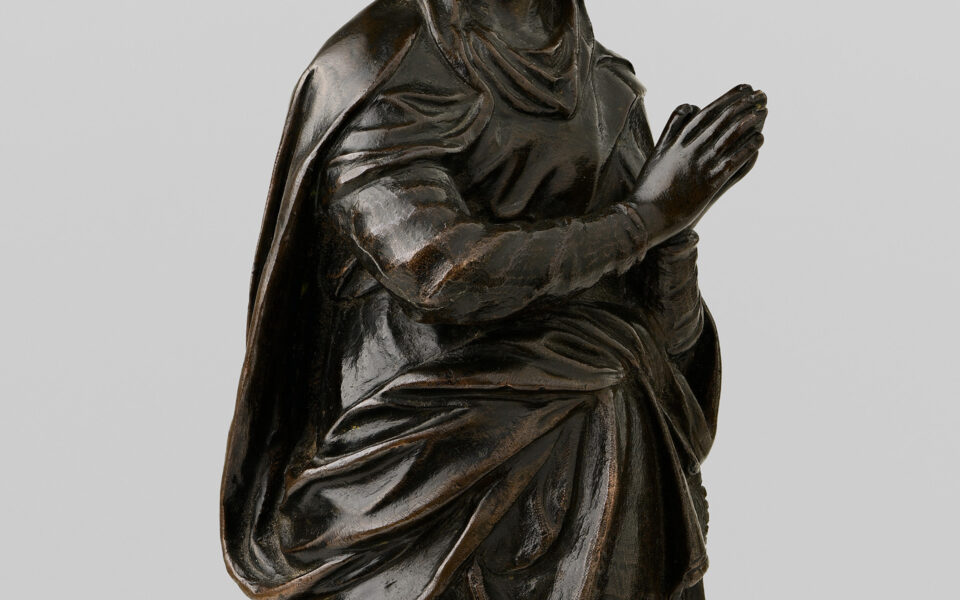
A rediscovered Lombard ‘bronzetto’
This unpublished bronze statuette is a small-scale reproduction of one of the best-known masterpieces of late 16th-century Lombard sculpture: the marble Madonna Assunta by Annibale Fontana (1540-1587), made for the façade of the Milanese church of Santa Maria dei Miracoli presso San Celso. Achieved in 1583-1584 and installed in 1590, just thirty years later the statue was recovered in the church – in order to protect it from the bad weather – and replaced with a copy made by Gerolamo Prevosti.
The sculpture became immediately so important that it was taken as a model – together with other works by the same author – by many artists along the 17th century. After all, many of Annibale’s wax and terracotta sketches had found their way into the collections of the Biblioteca Ambrosiana, founded by Cardinal Federico Borromeo in 1607, where they were widely studied and copied. The re-use of Fontana’s inventions after his death was not uncommon even in the context of the Milanese goldsmiths’ workshops.
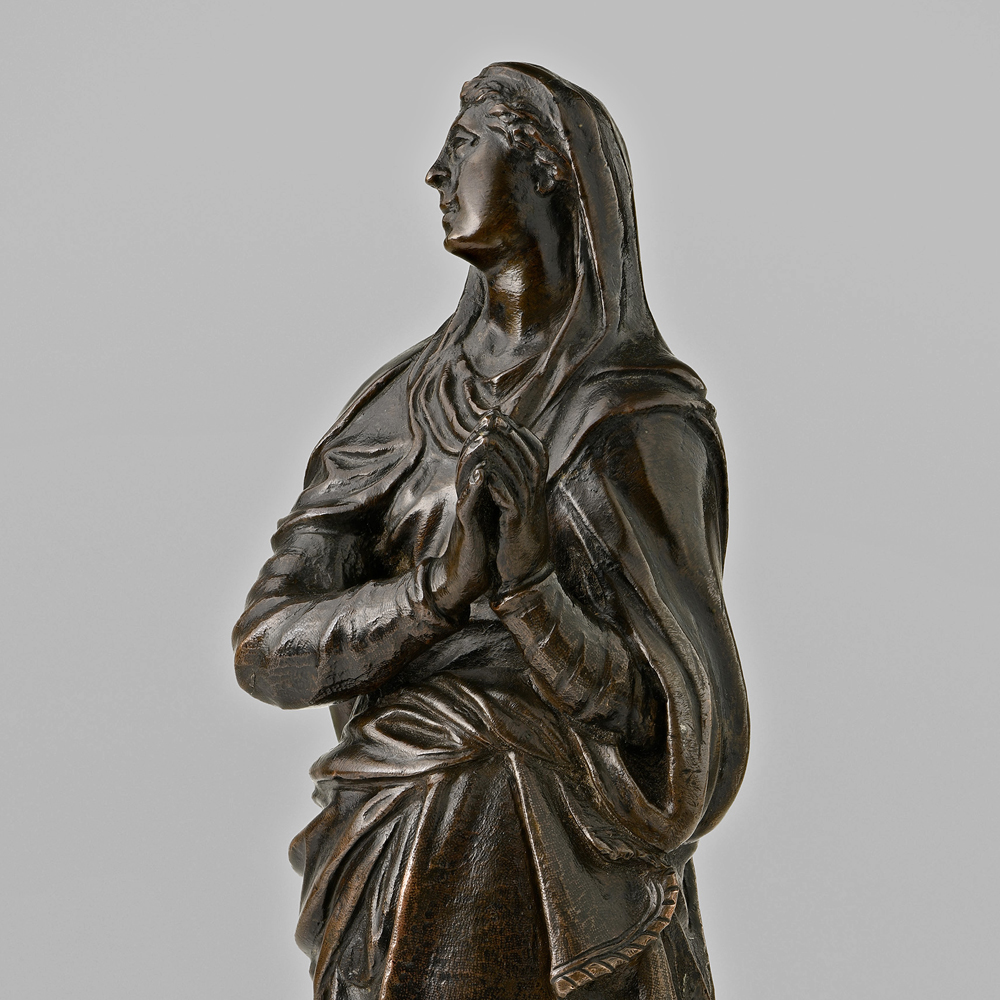
A remarkable example is that of a precious silver reliquary – formerly belonging to the Treasury of the same Milanese St Celso church – probably made a few years later (but certainly before 1611, when its donor, Delia Spinola, passed away). In the reliquary, the central figure recalled the Madonna Assunta by Fontana, while the silver statuettes of the angels with trumpets on either side reproduced the marble ones (also made in 1587 by Fontana) still on the crowning of the façade, flanking the copy of the Madonna.
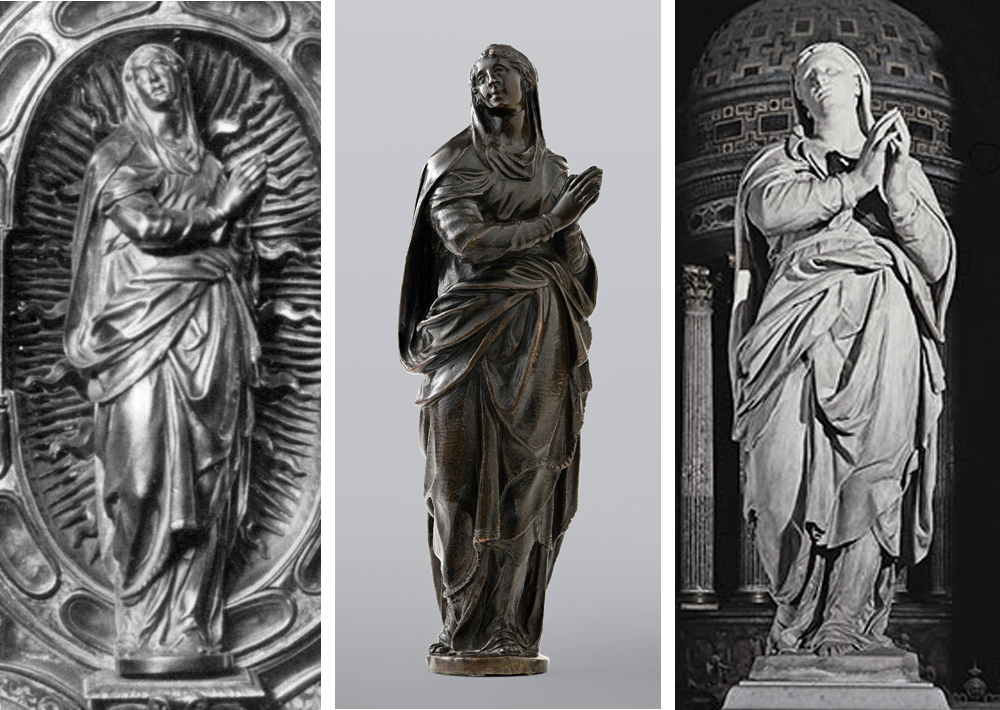
This reliquary is now lost, but there is a photographic documentation from 1930. Comparison of the present bronze Assumption and the silver version, which is only possible today through that old picture, leaves no doubt that they were both cast from the same model, as confirmed by the size, the precise correspondence of the folds of the drapery and the detail of the fringe of the Virgin’s mantle, which is absent from Fontana’s marble but appears in both statuettes. The greater fineness of the silver version can be attributed to the characteristics of the different casting materials, while the 4 mm difference between the height of the bronze (23.6 cm) and that of the silver (24 cm) is small enough to think that they were both cast from the same model.
The silversmith probably got the models for casting the reliquiary statuettes, and consequently for the bronze version of the Madonna, from Gian Andrea Biffi (c. 1580-1631), one of the most renowned sculptors of the time – working for the Fabbrica del Duomo di Milano – who, as documented on several occasions at the beginning of the 17th century, provided wax models inspired by Fontana’s works for the casting of liturgical objects. Biffi’s style is also reflected in the synthetic modelling of the faces, marked by a strong patheticism recalling certain pictorial solutions by Cerano, an artist with whom Biffi often collaborated.
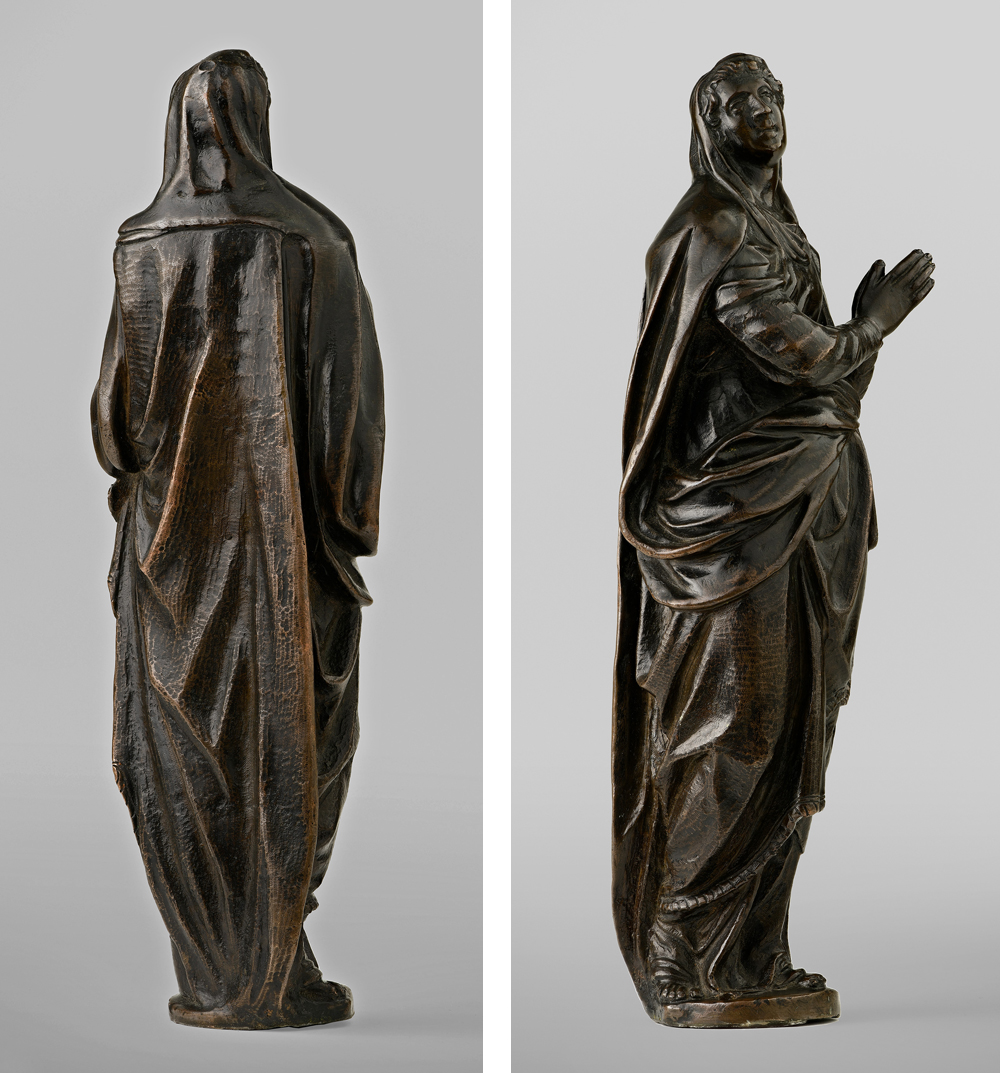
In conclusion, it is perhaps possible to imagine that the bronze statuette of the Assumption analysed here is to be linked in particular to the complex event of the “tabernacolo novo” for the high altar of San Celso: a work that started around 1600, involving the Brescian Camillo Cappi in collaboration with Gaspare Mola for the castings, which in the end was never realised.
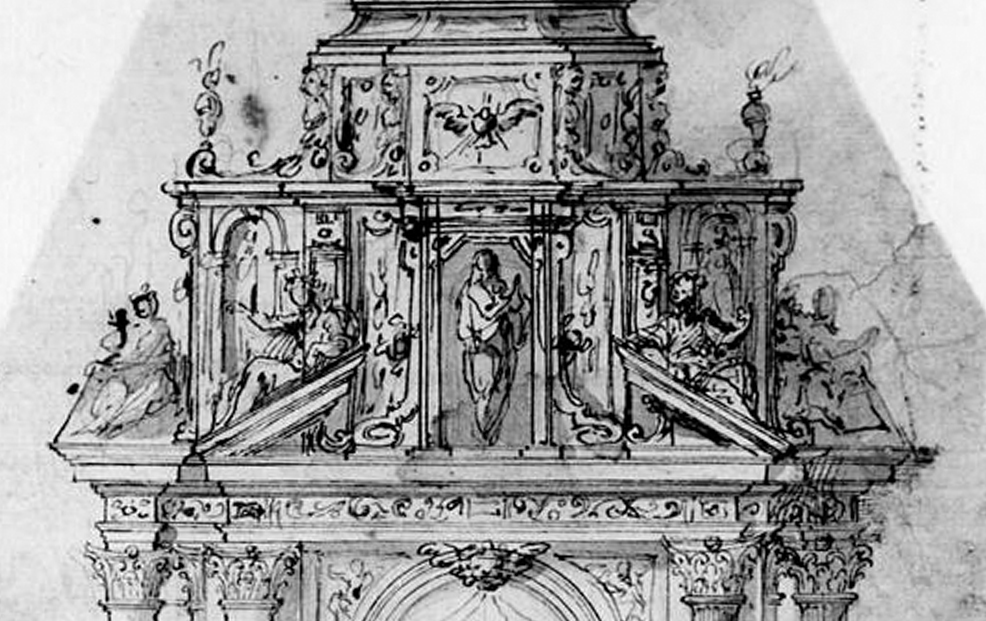
Among the various 17th-century drawings traditionally associated with the project for San Celso’s new tabernacle, there is an anonymous one showing a statuette in the tympanum which is evidently a reduction of Fontana’s Assunta: it cannot be excluded that, at some point, they planned to insert into the new tabernacle a cast bronze statuette, like the present one, and that the same model was reused to cast the silver version for the aforementioned reliquary.
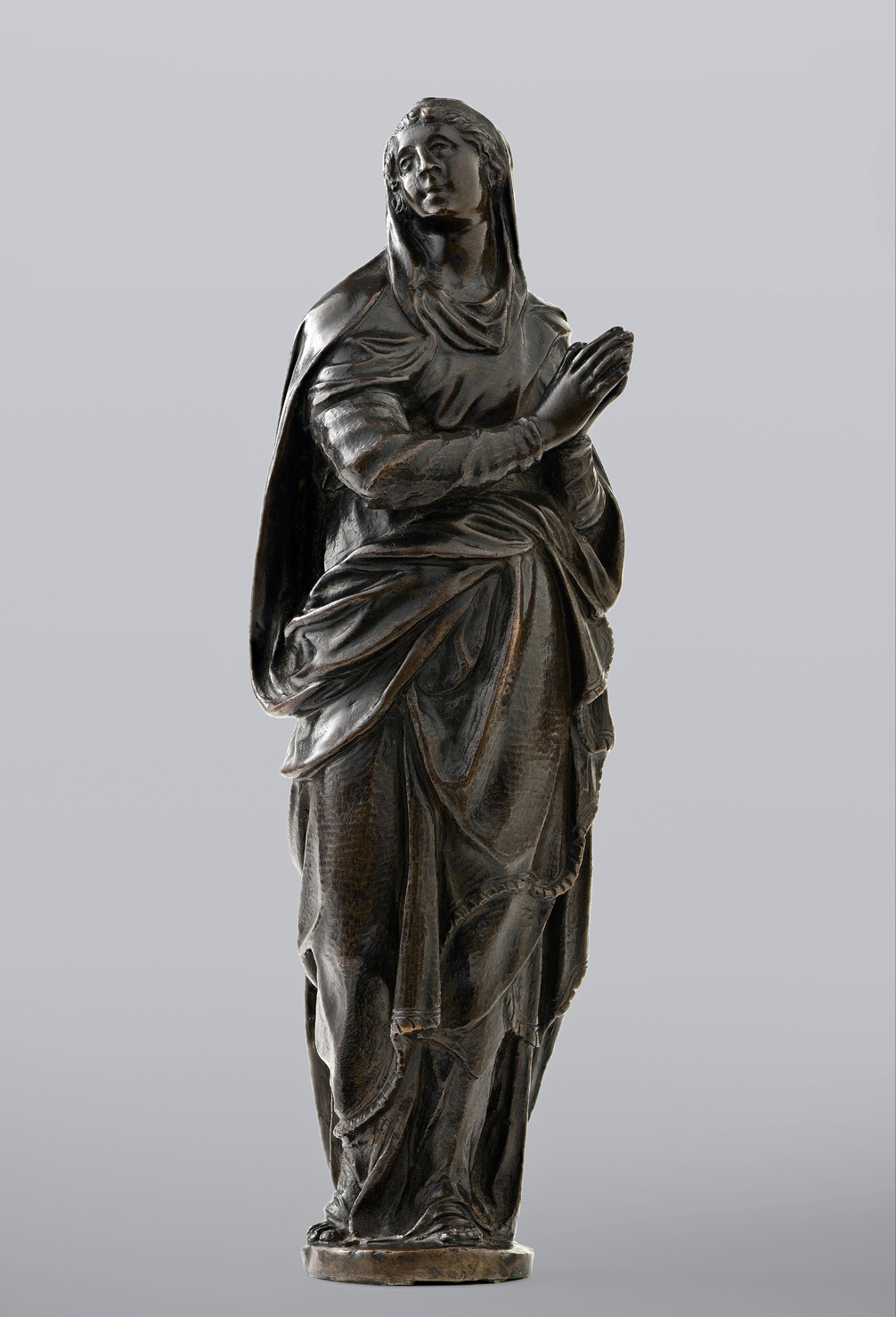
Gian Andrea Biffi (1580 circa – 1631), after a model by
Virgin of the Assumption
Bronze
Cm 23, 6 h
Detailed essay by Dr. Susanna Zanuso (2021)
© 2013 – 2023 cesatiecesati.com | Please do not reproduce without our expressed written consent
Alessandro Cesati, Via San Giovanni sul Muro, 3 – 20121 Milano – P.IVA: IT06833070151